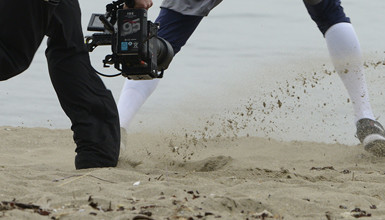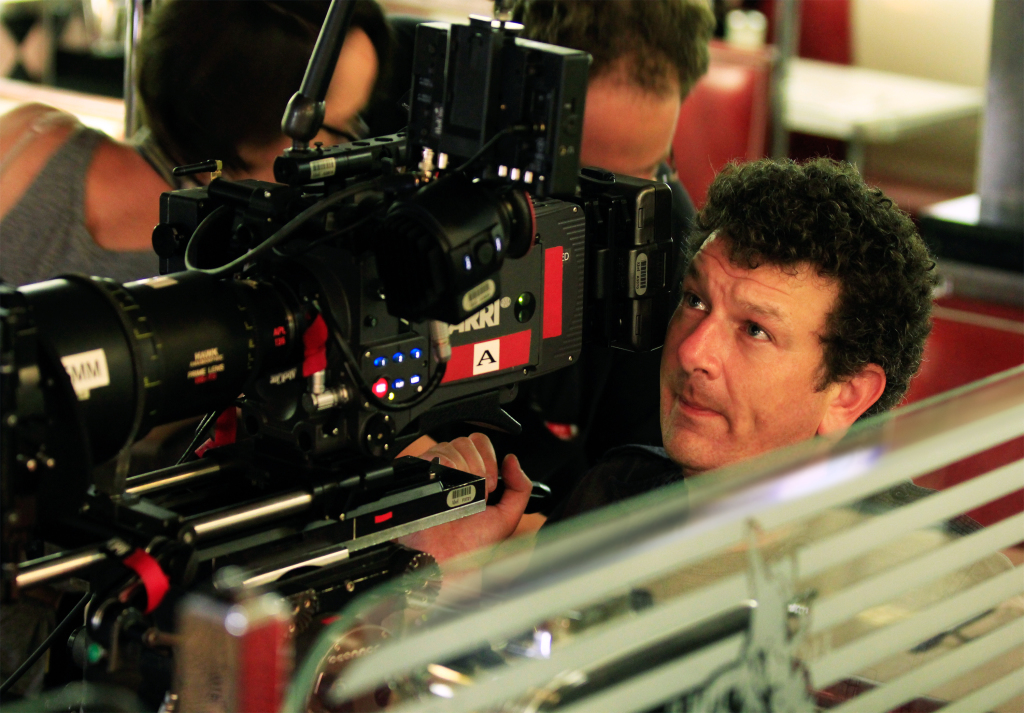
Following the unlikely friendship of a punk-rocker turned suburban mom and a confused seventeen-year-old, the film stars Juliette Lewis, Jonny Weston, and Cybill Shepherd. It premiered at this year's SXSW festival, where it won the Gamechanger award, and it has been picked up by IFC Films. Phil was nice enough to answer some questions about his whirlwind experience on the project.
How did you get involved in this project?
PL: I had previously worked with director Jen McGowan on her short films, first as producer on Confessions of a Late Bloomer and as cinematographer on her next film Touch. Touch went on to win a lot of critical acclaim and awards. When Kelly & Cal producers saw it at a film festival, they approached Jen to ask her what she wanted to direct next, and they were kind enough to ask if the DoP would also be shooting the feature. Of course, I was happy to.
What was your shooting schedule like?
PL: Tight. We had a 20 day shoot, over three weeks.
Tell us a little bit about the locations you were shooting in and what kind of lighting situations were involved.
PL: We were shooting in and around Great Neck in Long Island - mostly practical locations, homes, schools, community centers. We had a few days on a stage at the old Pfizer factory out there, but the two main locations, Kelly's house and Cal's converted garage were on location.
We went with a small package of lighting, partly because I knew truck space was limited (and my inner electrician reminded me that too much kit is much more deadly than too little), and partly because we were shooting ALEXA, and frankly, in the locations we were going to be shooting in most of our grip team's work would be controlling and shaping light rather than pumping it in. Mostly we were shooting domestic scenarios, bedrooms, living rooms, basements, suburban parks. So by day I would bounce one, or depending on the scene, two, of our 4K Cinepars into a 12x12 ultrabounce outside and cut it inside and add a layer of practical sheers (one set bleached, one set unbleached). By night, I was using mostly practicals, tweaked a little by a few chinaballs, Litepanels, and small units on dimmers.
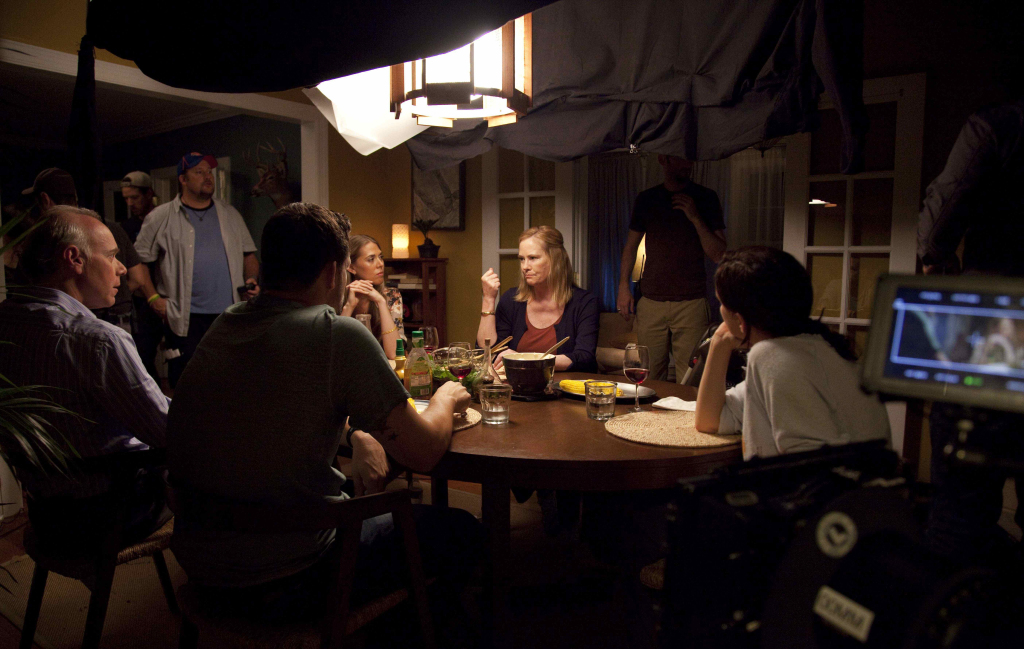
Did you experience any challenges related to the location or shooting conditions?
PL: We were shooting at the height of a New York summer, so it was incredibly muggy and hot pretty much the entire time. The sets would become very warm indeed, and I know that other cameras I've used in the past would certainly have cried Uncle on a daily basis. But not the ALEXA. She was solid, reliable and always ready to go.
Had you used the ALEXA previously?
PL: I'd used ALEXA only a couple of times previously, but had tested it a few times in my abortive attempts to convince networks to allow me to shoot a docudrama on it. When I tested and showed Jen the results against other cameras there wasn't even a discussion -- the image was beautiful and rendered skin tones amazingly well. The producers were so supportive that they even found the time and money to give me a full lighting and camera test with the cast for an afternoon in a church hall adjacent to our main location a few days before we officially rolled. This testing was invaluable for us to try out the various lens and lamp combinations with Juliette actually in the shot -- it allowed everyone to feel that we'd truly run the gear through it's paces, and Jen was able to take the time to consider the lighting plans she wouldn't have time to really study when we started rolling for real.
Can you give us some insight into how you rigged or accessorized the camera?
PL: Kelly & Cal is almost 80% handheld, and we'd made the decision to shoot scenes end-to-end in their entirety -- so weight and space were both major considerations in our camera prep. First AC Benhood Dadfar and his team built out the camera with two modes -- the first was as if we were running and gunning without crew support (so incorporating two on-board monitors and a larger battery), the second was as stripped down as possible -- removing a monitor and running to off-board power. Both set-ups still had the Preston remote follow focus rig for Ben to operate, and we quickly came to use the Easyrig as standard.
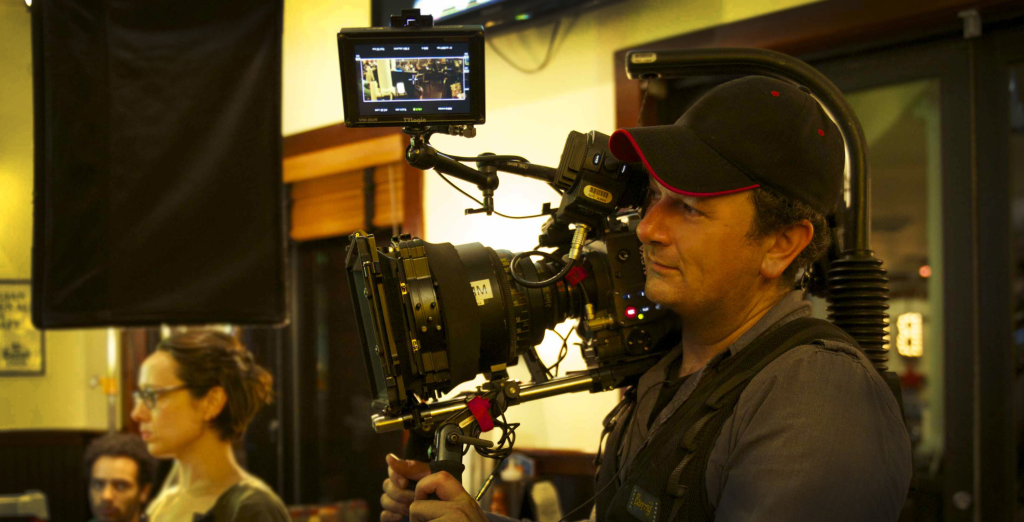
How did you decide to go anamorphic for this feature?
PL: Early on in discussing the film, Jen's major concerns about how the film would look centered around the idea that she didn't want the film to be "televisual". The film is ostensibly a two-hander with some fantastic scenes that rely on two characters interacting and talking -- and Jen was worried that our biggest enemy was slipping into the language of long form TV drama. I was thrilled Jen had said that and introduced the idea of shooting anamorphic almost immediately, (or at least of shooting in the 2.40 ratio) because the script features a character in a wheelchair.
I remember Spielberg talking about the decision to shoot Jurassic Park in 1.85 to allow the dinosaurs to be tall in the same frame as the people, but conversely by using the same logic, I knew that if we shot Kelly & Cal anamorphic we simply couldn't get a seated person and a standing person in the same frame without forcing us to go incredibly wide, thus any wide shot would be filled with empty voids, which I felt would work so well for this story. Additionally, in close-ups the anamorphic frame would force us to actively decide where we needed to be at any given moment in the script; if Cal's seated then to get a close up of Kelly standing, either the camera would have to be very low looking up at her, or over her shoulder looking down on him, or at his eye level cutting Kelly off at the waistline or at her eyeline isolating her face entirely from Cal. So we could never just have "a close up" -- we had to make very definitive decisions, and I knew that asking these questions of the scenes would make for a very considered shot selection that almost couldn't be like bland TV coverage because we were being so specific in every moment. We were also able to work with the limitations of our locations. Kelly's house is somewhere she's questioning being in, trapped with her child for days on end, and while we were extremely keen to avoid this being a "trapped by suburbia" film, a big moment in act one is when Kelly finally steels herself and goes outside for the first time in ages. So it was great to be able to play long shots down corridors framed by the walls of the house, or always catching some wall or foreground to give the house a presence in every shot, until finally she breaks outside and the frame holds on a wide as she walks freely within the shot for the first time in the film.
What lenses did you use, and why did you choose them?
PL: We ended up with a great set of Hawk V-series -- 135mm, 100mm, 75mm, 40mm. We went with the original V-series because I knew in the smaller locations we were in, and the number of car interior scenes we were planning, we'd need the closer focus of the V's over the V-lites.
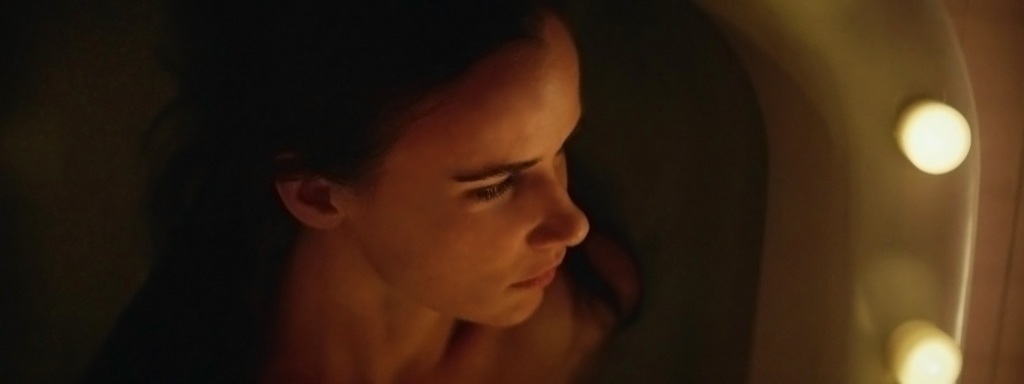
Do you think that the anamorphic format added to the storytelling? Did you face any specific challenges with shooting in this format?
PL: We felt it on set almost immediately, the strength of the performances and the breathtaking chemistry that Juliette Lewis and Jonny Weston brought to the scenes just brought a cinematic scale to everything -- and so aside from the decisions we were making about how to cover scenes, and the strength of the performances, there's just something "big" about that frame and how as an audience it makes you focus on the human face, landscape and composition in a way that just uniquely belongs in the cinema. As far as challenges, aside from the relative greater weight of the V-series lenses over spherical, the challenge of a fast moving handheld shoot is clearly always going to be focus. And aside from having the amazingly talented Benhood Dadfar as my 1st AC, having the knowledge that I was shooting ALEXA enabled me to try a couple of takes before bumping the ISO up a little and closing down a stop or so to give us a safer version.
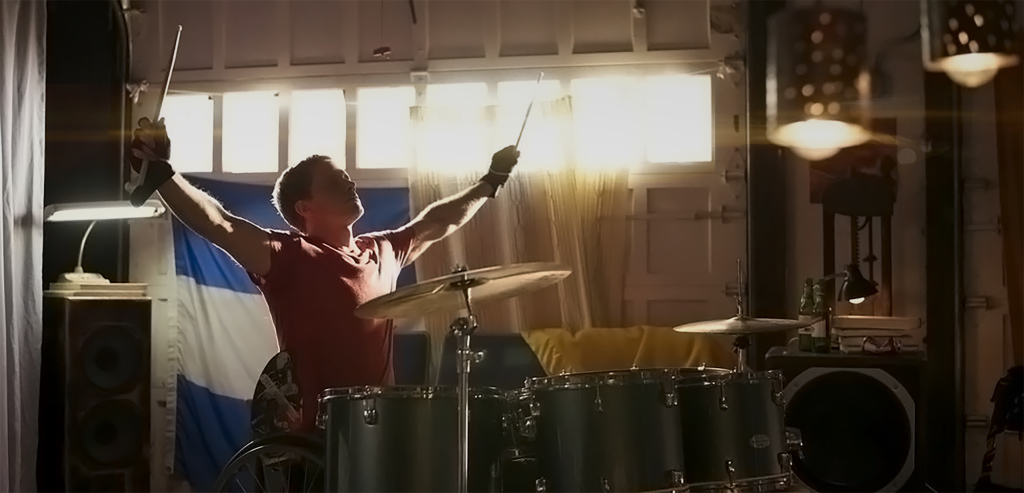
Would you consider this a low-budget feature? If so, did this make it any more challenging to commit to anamorphic?
PL: This was definitely a low budget film, but I don't think it particularly effected our abilities to afford the anamorphic lenses. There is no doubt they are more expensive, but we were able to offset that expense by being flexible with my lens selection, and by working with Line Producer Ged Dickersin to day play any big ticket items or camera grip. As ever, it's about being smart and working well with the team to achieve the film. If there's one thing that producing so much TV has taught me it's that in the real world the budget is everyone's department, and if you work with that in mind then folks are way more inclined to help you find the wiggle-room to get you what you need when the time comes. I will add that there were some quantifiable benefits to shooting anamorphic, aside from simply having a film that people say looks lovely. One is that because the frame is wider, the actors were able to move more freely in the frame. It began to feel to us as if had we been shooting 1.85 we would had to have either constrained the actors to a smaller canvas or would have been cutting more and moving the camera more to get the coverage of the larger space, which would have slowed us down immensely.
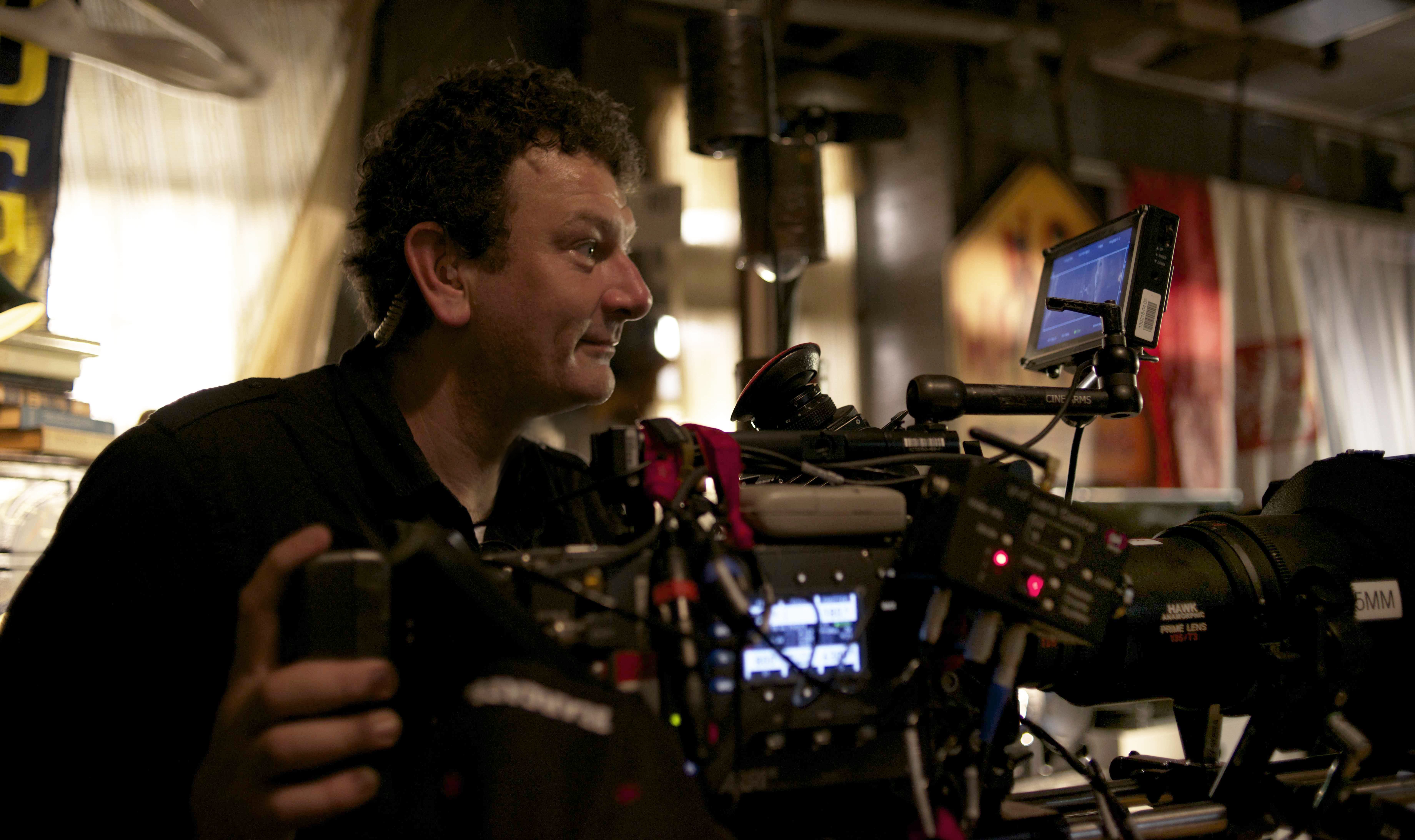
How did AbelCine get involved in the project?
PL: Line Producer Ged Dickersin had a long running relationship with Mike Nichols shooting a number of New York-based movies with Abel and had been consistently impressed with the service. I too had long known of AbelCine -- lots of my friends in New York work with the rental department's Mike Nichols regularly, and when I asked folks for NYC vendor recommendations almost everyone suggested AbelCine. A rental partner on any production is only as good as the people who work with you day to day. The AbelCine team were exceptionally great to work with, helpful and thoughtful, and it seemed their goal was to ensure I would not get to set wishing I had tried something else, or was missing any equipment I needed. They quickly learned our production limitations and suggested great alternatives quickly and creatively. I don't believe I have ever heard the word "no" from any of the team, but always -- "how about we try". And that means the world in the uphill challenge of making any independent film come to life.
About Phil Lott
Getting his start shooting 16mm in the UK, Phil shot four features by the time he was 18. While a student at the University of Westminster's Riding House Street film school, he got the opportunity to work on a documentary series for Discovery Channel involving traveling around the world. His resume includes projects like National Geographic's Locked Up Abroad, CBS' Undercover Boss, AMC's The Pitch, as well as Smash Lab and various Shark Week shows for Discovery. Phil even convinced Discovery to allow him to shoot the first non-scripted show with ALEXA as the A & B camera.
To see more of Phil's work, visit phillott.com, and check out the official Kelly & Cal trailer on iTunes! For information on going anamorphic with the ALEXA Plus 4:3, check out our page of helpful videos and resources.


















